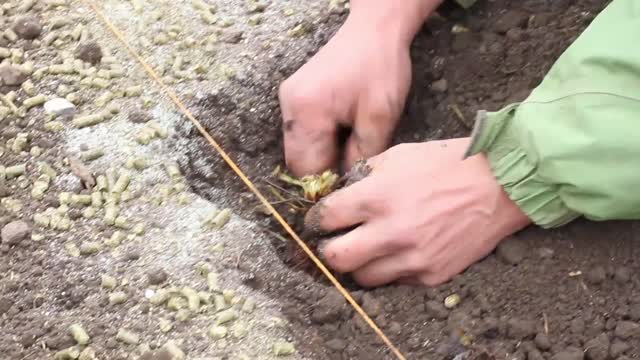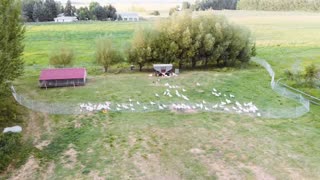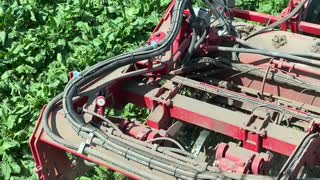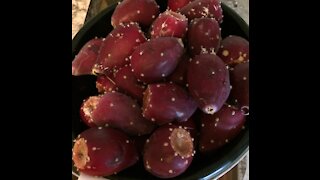Premium Only Content

How to Plant Strawberries - at Harvest Haven
www.HarvestHaven.com
www.facebook.com/harvesthaven
Here is our tutorial on how to plant bare root strawberry transplants so you can grow organic strawberries.
Supplements we use on our strawberries, all of which are available at our store:
Organic Alfalfa Pellets - Provide a source of nitrogen, other nutrients and organic matter to feed both the plant and soil.
Kelp Meal - Sustainably harvested, sun dried and allows for a return of nutrients that have washed off the prairies to the Atlantic for millennia. Excellent source of micro-nutrients, pre-chelated by the kelp to make it available and in the perfect ratio for uptake by plants and animals. Also contains cytokinins which stimulate root development and plant growth (see cytokinins).
Aragonite - A mixture of sea shells and coral and excellent quick acting source of organic calcium and micro-nutrients.
Zeolite - Ground volcanic rock that has extra-ordinary Cation Exchange Capacity (the capacity to electrically retain nutrients) and water retention capacity. Helps to keep constant moisture and nutrient availability in the plant's root zone.
Worm Castings - A nice name for earthworm poop. Excellent source of beneficial fungi and other microbiology as well nutrients to help the plant access nutrient and defend itself against pathogens.
Transplant Solution Recipe and Ingredient Roles
200 gallons water
1 lb of organic cane sugar - good source of energy for microbial growth
36 oz soluble kelp - as described above with kelp meal
4 gallons Organic Gem liquid fish fertilizer - Excellent source of nitrogen, other nutrients and amino acids to feed the plant and soil microbiology
6 oz mycorrhizae- beneficial symbiotic fungi that extend root zone of the plant, allowing it to access more nutrients, in particular phosphorous, and water
1.6 oz sea solids (sea minerals) - excellent source of minerals in perfect ratio
1/10 lb N-fix - non-symbiotic nitrogen fixing bacteria
10 oz Yucca - natural wetting agent/surfactant that helps nutrients stick or penetrate + acts as a food for beneficial fungi
2 cups of humic acid - important chelator, combining minerals into organic compounds that are more available to plants
-
 1:04
1:04
Harvest Haven
3 years agoHarvest Haven Pasture-Raised Meats
951 -
 2:59
2:59
Messageweek
3 years ago $0.01 earnedBarley Harvest
82 -
 0:12
0:12
rootjeff
4 years agoSugarbeet harvest
946 -
 1:23
1:23
Simple Home and Hearth
3 years agoHow to Harvest Prickly Pear
49 -
 0:13
0:13
farmingontheborder
4 years ago $0.03 earnedHarvest 2020
123 -
 5:01
5:01
The Redneck Engineering Channel
3 years ago $0.01 earnedChristmas tree harvest
94 -
 0:13
0:13
BakeshopCreations
3 years agoCutting Strawberries, sped up
13 -
 0:55
0:55
Deer In Nature
3 years agoHarvest Feast
33 -
 1:02
1:02
Benjamin72
4 years agoHarvest Moon 2020
133 -
 0:10
0:10
geargrabber63
4 years ago $0.04 earnedSugarbeet Harvest 2020
135